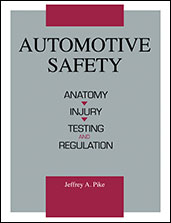Journal Article
Validation and Sensitivity Studies for SAE J2601, the Light Duty Vehicle Hydrogen Fueling Standard
2014-04-01
2014-01-1990
The worldwide automotive industry is currently preparing for a market introduction of hydrogen-fueled powertrains. These powertrains in fuel cell electric vehicles (FCEVs) offer many advantages: high efficiency, zero tailpipe emissions, reduced greenhouse gas footprint, and use of domestic and renewable energy sources. To realize these benefits, hydrogen vehicles must be competitive with conventional vehicles with regards to fueling time and vehicle range. A key to maximizing the vehicle's driving range is to ensure that the fueling process achieves a complete fill to the rated Compressed Hydrogen Storage System (CHSS) capacity. An optimal process will safely transfer the maximum amount of hydrogen to the vehicle in the shortest amount of time, while staying within the prescribed pressure, temperature, and density limits. The SAE J2601 light duty vehicle fueling standard has been developed to meet these performance objectives under all practical conditions.



